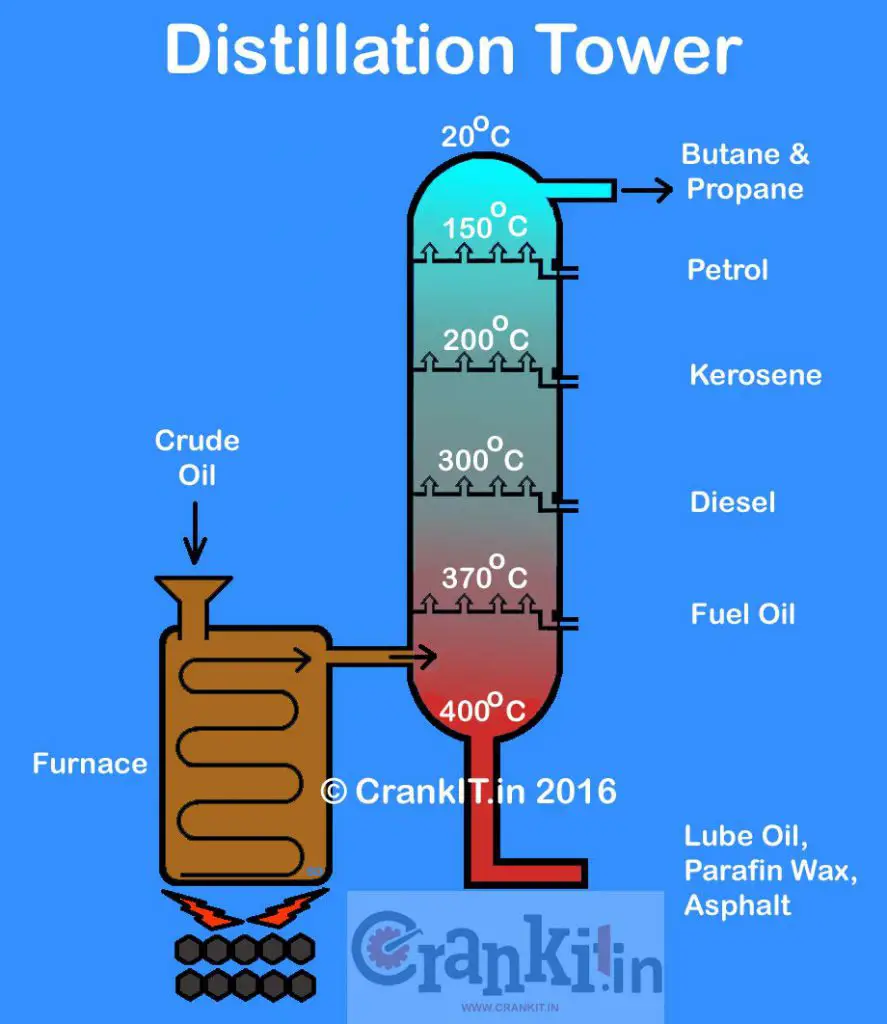What is Diesel Fuel?
This fuel got its name from German mechanical engineer ‘Rudolph Diesel.’ He invented ‘Compression Ignition’ technology that uses it as fuel. Firstly, the oil companies extract the crude oil thru’ the oil rigs. The refineries then carry out the fractional distillation of the ‘Crude Oil’ (see diagram below).

First, the oil companies extract the ‘Crude Oil,’ which contains the dieselfuel, from the oil wells. Then, manufacturers heat it in a furnace. Thus, the fuel separates between around 300°C and 350°C. The refineries then collect the dieselfuel. They store it in the barrels. Then, they transport the same to various dealers/outlets.
Characteristics:
Diesel is denser than petrol. Thus, the diesel-fuel carries more volumetric energy density. However, unlike rich burning petrol, the CO2 emissions from the dieselfuel are marginally small. It is because it is a ‘lean-burning’ fuel. The dieselfuel contains about 15% more energy. It also returns extra miles than the same amount of petrol fuel. Mainly, ‘Compression Ignition’ engines use diesel-fuel, which operates the commercial vehicles carrying heavy loads.
In automotive, most cargo trucks, buses, tractors, and construction equipment have engines such as Direct Injection, In-Direct Injection, and Common Rail Direct Injection. They all use the dieselfuel. Some cars and small trucks also run on it. Some generators also use dieselfuel engines to produce electricity. However, the burning of dieselfuel without particulate filters generates harmful ‘soot’ and NOx emissions. Hence, some environmental protection groups term it the ‘dirty fuel.’
The dieselfuel sold earlier contained a high amount of sulfur, which produced harmful emissions. Thus, it affects human health to a great extent. So to reduce the sulfur content, the United States Environmental Protection Agency (USEPA) implemented strict rules in this regard in 2006. According to the regulations, the sulfur content in all the dieselfuel sold in the United States must be under 15 parts per million.
Types of Diesel:
There are mainly three types of dieselfuel which are:
- Petroleum-based- Extracted mainly from the fossils.
- Synthetic based – Produced from carbonaceous materials such as biomass, biogas, natural gas & coal, etc.
- Biobased – Obtained from vegetable oil or animal fats.
Read More: Water + Air = Guess what?>>
